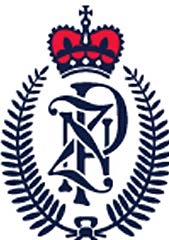
 I NEW ZEALAND
ffl'::!fl§
I NEW ZEALAND
ffl'::!fl§
IR-01-23-12667
6 June 2023
Mason
fyi-reguest-22567 -3cebacc0@reg uests. fyi. org. nz
Dear Mason
REQUEST FOR INFORMATION
Thank you for your Official Information Act 1982 (OIA) request of 26 April 2023.
In your request, reference IR-01-23-12667, you stated:
Passive GPS
tracking devices are tracking devices which store the location of a
device and only
convey that data once connected to an external source or upon command. I am presuming, for the
Police at least, that these devices have now been superseded by conventional GPS
tracking devices
compatible with real time transmission.
My response to each of your questions can be found below.
Please advise whether the Police are using I have previously used other forms of surveillance where
a
device records a
location but it is not conveyed in real time.
No other forms of surveillance used or previously used by Police where a device records a location but
is not conveyed in real time, have been identified. This part of your request is therefore refused pursuant
to Section 18( e) of the Official Information Act 1982 on the basis that the information requested does
not exist.
The model numbers of previous devices used by the Police to conduct these forms of surveillance.
This information is withheld under section 6(c) of the OIA as the release of this information would be
likely to prejudice the maintenance of the law, including the prevention, investigation, and detection of
offences, and the right to a fair trial.
The police manuals and guidance material which detailed these forms of surveillance.
The Police Manual chapter 'Tracking Devices' is provided as requested however some information has
been withheld under to section 6(c) of the OIA.
Please advise of the first use of these forms of surveillance.
No records are held of when GPS tracking devices were first used, however from staff recollection, it
was in the mid-1990s. This part of your request is therefore refused pursuant to section 18(e) of the
OIA on the basis that the information requested does not exist.
If there was a
period in time where Passive GPS
tracking devices were the only devices in service
{based on their introduction date and phase out) please provide the number of warrants issued for
tracking devices during that period.
As per above, no other forms of surveillance used or previously used by Police where a device
records a location but is not conveyed in real time, have been identified. Records of any such passive
GPS tracking devices do not exist, and therefore the number of warrants issued for tracking devices
during this period cannot be identified. This part of your request is therefore refused pursuant to
section 18( e) of the OIA on the basis that the information requested does not exist.

You have the right to ask the Ombudsman to review my decision if you are not satisfied with the
response to your request. Information about how to make a complaint is available at:
www.ombudsman.parliament.nz.
Yours sincerely
Detective Inspector Geoff Jago
National Criminal Investigation Group
New Zealand Police
Tracking Devices
Table of Contents
Table of Contents
2
Overview
4
Background to tracking devices
4
Legal authority to install tracking devices
5
Search & Surveillance Act 2012
5
Installation
7
Procedure
7
Controlled deliveries
7
Related information
7
Tracking of motor vehicles, aircraft and complainant’s smartphones etc.
8
GPS tracking of vehicles
8
Tracking of aircraft
8
Tracking ‐ Disclosure
9
Documentat on
9
GPS and WiFi tracking using complainants’ devices
9
Related information
9
Tracking Devices
“RESTRICTED” This is an operational Police document classified as Restricted. The contents may not be copied or disseminated
without prior approval from the Director: Criminal Investigations
3/9
Tracking Devices
Overview
Background to tracking devices
The Technical Operations Group (TOG) is able to provide
tracking devices for tracking
Despite the legal authority provided to install tracking devices
Early contact with TOG will assist in achieving the timely delivery of tracking capability.
4/9
Tracking Devices
Legal authority to install tracking devices
Search & Surveillance Act 2012
The legal authority to install tracking devices is contained in the Search and Surveillance Act 2012 (refer sections 45 to 64 of this Act). In
summary, the provisions of the sections and how they impact in practical terms are outlined in this table.
5/9

Tracking Devices
Installation
Procedure
Follow these procedures to obtain installation approval:
‑ Obtain the required approval/s ‐
Controlled deliveries
The tracking of things other than motor vehicles is usually limited
controlled deliveries.
Early notification to the TOG through their regional operations manager for their services is essential to:
‑ discuss operational requirements and develop a plan
Investigators must obtain a surveillance device warrant authorising the use of an tracking device if time permits and it is believed that
the tracking device cannot be retrieved within 48 hours.
If the installation of
be aware of the following matters:
‑ A surveillance device warrant authorising the use of an interception device is required and all aspects pertaining to these which
is outlined elsewhere in this chapter need to be complied with.
‑ By law, the installation of the
device can only be done by Police and the role will be designated to the Police TOG.
Related information
See:
‑ ‘Part 7 ‐ Controlled deliveries’
‑ ‘Police and Customs powers relating to delivery of drugs’ in ‘Part 3 ‐ Warrantless powers to search places, vehicles and things’ of
the ‘Search’ chapter for Police powers when, during a controlled delivery, a Customs Officer has exercised their powers under
section 12 of the Misuse of Drugs Amendment Act 1978.
7/9
Tracking Devices
Tracking of motor vehicles, aircraft and complainant’s smartphones etc.
GPS tracking of vehicles
The investigative requirements will need to be discussed with a TOG Operations Manager as these requirements will determine:
The tracking device provides information on the location of the vehicle or thing not who is driving or in the vehicle,
TOG will provide an Operations Manager
This officer will also be involved in operational planning
The device must be retrieved
prior to the expiration of the surveillance device warrant.
Care must be taken to comply with the surveillance legislative requirements contained within sections 45 to 64 of the Search &
Surveillance Act.
Surveillance device warrant reports and warrantless surveillance device power reports for a Judge must be submitted in accordance
with sections 59 and 60 of the Act. The O/C Investigation must prepare and submit these reports.
Tracking of aircraft
The Search & Surveillance Act 2012 provides the legal authority to place / install tracking devices on any vehicle such as helicopters and
fixed wing aircraft.
rule 91.7 and 91.11 of the Civil Aviation Rules. These rules restrict
portable electronic devices that can be used on Instrument Flight Rules (IFR) capable aircraft and prohibit the interference, lawful or
otherwise, of aircraft without the authority of the owner / operator or pilot. If considering tracking an aircraft then make early contact
with your regional TOG Operations Manager.
8/9
Tracking Devices
The CAA will also be able to provide:
‑ all required details of the target aircraft including the fact that it is IFR capable or otherwise
Depending on the tracking equipment used, and its proposed installation it may be a requirement of the CAA that the installation is
supervised by a qualified aircraft engineer.
Tracking ‐ Disclosure
The Criminal Disclosure Act 2008 requires disclosure of all information that is
relevant to either the defence or prosecution.
Where possible the investigation should utilise an ‘evidential’ officer to observe the vehicle and occupants of the vehicle at appropriate
locations
Where tracking devices are utilised, disclosure may be declined under section 16(1)(a) ‐ “disclosure of the information is likely to
prejudice the maintenance of the law, including the prevention, investigation, and detection of offences”; particularly if it is not
relevant to either party.
Where disclosure has to be made, data will be provided by the TOG Operations Manager at the conclusion of the tracking phase.
Documentation
GPS and WiFi tracking using complainants’ devices
Smartphones and other devices that use GPS, WiFi and other technology to provide location services are great tools for Police when
investigating crimes involving these devices, i.e. when a smartphone is stolen and the complainant has a ‘find my device’ type
application.
Related information
See:
‑ ‘Part 3 ‐ Warrantless powers to search places, vehicles and things’ in the ‘Search’ chapter relating to tracking stolen property for
further information about:
‑ acting on tracking information
‑ powers under the Search and Surveillance Act, determining whether tracking stolen property is surveillance or search and
what may be more appropriate, warrant or warrantless power
‑ determining time and delay for tracking stolen property
‑ GPS tracking and the Search and Surveillance Act, WIFI tracking powers and WIFI tracking process and appreciation.
Printed on : 08/05/2023
Printed from : https://tenone.police.govt.nz/pi/police‐manual/investigations‐and‐intelligence/covert/electronic‐
interception/tracking‐devices
9/9



